Grassland Farmer Of The Year
Grassland Farmer Of The Year
Previous Winners
Winners of BGS Grassland Farmer of the Year
| Year | Winner | Enterprise | Country (Local Society) |
| 2023 | Robert Black | Beef & sheep | Scotland (East of Scotland Grassland Society) |
| 2022 | Aled & Owain Rees | Dairy | Wales (Cardigan & District) |
| 2021 | Marc Jones | Beef & sheep | Wales (Powys) |
| 2019 | John Martin | Sheep | Northern Ireland (Ulster) |
| 2018 | Richard Rogers | Dairy | Wales (Anglesey) |
| 2017 | Rhys James | Dairy | Wales (Cleddau) |
| 2016 | Eurig Jenkins | Dairy | Wales (Bro Ddyfi) |
| 2015 | Colin Boggs | Dairy | Northern Ireland (Ulster) |
| 2014 | Dafydd Jones | Beef & sheep | Wales (Bro Ddyfi) |
| 2013 | Mathew Venables | Dairy | England (Cheshire) |
"Hidden"
2023: Robert Black
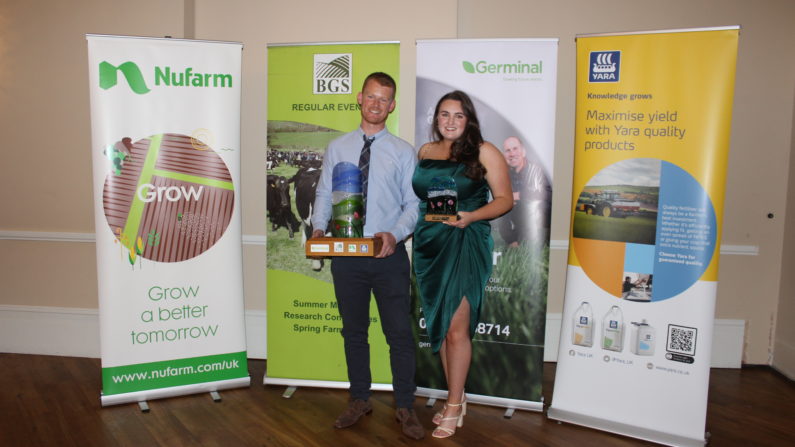
Robert Black, representing the East of Scotland Grassland Society, farms alongside his father, David, at Drochil Castle Farm, West Linton where they run a herd of 120 Stabiliser suckler cows and a flock of 1000 Highlander ewes and 200 home-bred ewe lambs, with all replacements being home-bred. The farm, much of which (48%) is permanent pasture, covers just over 500 hectares (1250 acres) and extends up to 445 metres (1460 feet). There is also a mix of long-term leys, short-term leys and forage crops including redstart and Italian ryegrass/red clover mix. Barley is also grown in rotation to provide feed for the finishing bulls.
The cattle herd, which is performance recorded, is currently being expanded. Thirty-two home-bred heifers, served by AI, will calve at two years of age. Calving takes place in May. Bull calves are left entire. The top performers are sold for breeding whilst the rest are finished for slaughter at 12 – 14 months on a TMR. Any heifers not required for breeding purposes are sold at 18 months of age. Performance recorded Highlander rams are turned in with ewes for 30 days at a ratio of one ram per 100 ewes. The flock typically scans at around 180%. Pre-lambing, the ewes do a full grazing rotation of the farm as one mob with daily moves, to stimulate early spring growth. The stocking rate is then reduced as the flock moves closer to lambing, which takes place outdoors in April.
During the summer months, large mobs are paddock grazed on 4 hectare breaks with ewes and lambs grazing ahead of the cattle. Post-weaning, lambs go on to the red clover silage aftermaths and ewes are moved to the hill grazing for 40 days, allowing the cows priority on the lower land during the mating period. Ewes return from the hill pre-tupping to improve their condition. All lambs are finished on the farm off forage, usually before the end of the year. The cows and the ewes are outwintered on deferred hill grazing with silage bales that are placed there in the summer, and no concentrates are fed to either.
Head judge Hugh McClymont said that Robert was on an upwards trajectory having increased both the technical and the financial performance of the farm. He also said that Robert had his head firmly on his shoulders and his feet on the ground.
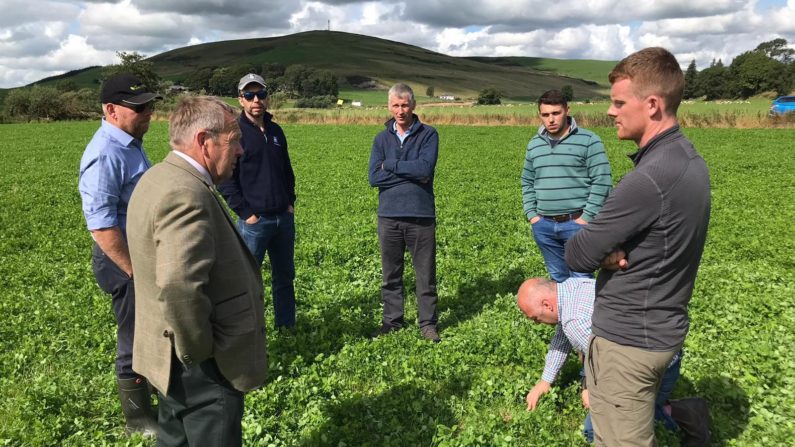
2022: Aled and Owain Rees
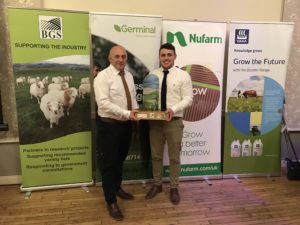
Aled and Owain Rees, representing Cardigan and District Grassland Society, run a 300-cow organic dairy herd at Treclyn-Isaf, Eglwyswrw, Crymych. The enterprise utilises 105 hectares which form part of a larger 385 hectare organic farming system. There are a mix of spring and autumn calving cows, the majority of which are pedigree Holstein, with a small number of Jersey crosses to improve milk solids figures. The average yield is 7,333 litres with 55% from forage.
The length of the grazing season is very much dependant on the weather. Grass is measured weekly, and fresh grazing is allocated twice a day. The clover content of the pastures is high, at over 40%. A multi-cut silage system is employed, with four silage cuts taken in 2021. Reseeding takes place when needed on under-performing pastures, and regular aerating is carried out on both silage and grazing areas.
Environmental work has been carried out, including hedge laying and tree planting, and the installation of solar panels has reduced electricity costs on the farm.
Head judge Hugh McClymont from SRUC said that Aled and Owain showed both enthusiasm and passion. They had full sets of figures for all aspects of grass and milk production and the whole family, including Aled’s wife Hedydd and daughter Mared, were working together and all driven by results.
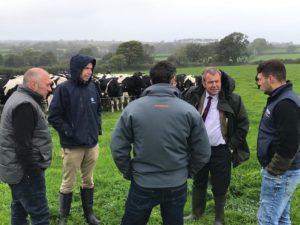
2021: Marc Jones
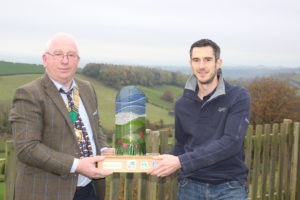
Marc Jones, a member of Powys Grassland Society, farms at Trefnant Hall near Welshpool where the aim is to maximize output from grass and forage while keeping a low-cost base. The judges described Marc as a young man with vision and determination to succeed who was on a journey to grow and farm with the environment in mind.
Marc runs a 500 ewe sheep flock and a 350 head beef finishing system on 202 hectares. The April lambing flock of NZ Romneys are outwintered on fodder beet and silage, and are turned on to grass around a month pre-lambing. No concentrates are fed. Lambs are weaned at 12 weeks of age and finished at 5-6 months of age (45 kg liveweight). The beef cattle are autumn-born Aberdeen Angus dairy bred heifers. At the end of their first grazing season, the yearlings are outwintered on fodder beet and silage then finished off grass at 22 – 24 months of age and around 600 kg liveweight.
Marc is moving more towards shorter term and herbal leys which continue to grow during the drier periods. The majority of reseeding takes place directly after fodder beet. Soils are sampled every 3 years (pH, P, K, and Mg) with a proportion of fields also tested for other trace elements. Very little FYM and slurry are produced, but broiler manure and sewage cake are utilised on the farm. Clamp silage is made for the young calves, whilst the majority of big bale silage is placed directly onto the fodder beet with the remaining bales used for buffer feeding in spring, autumn and dry spells.
Environmental work has been carried out including the planting of hedgerows, fencing off stream-side corridors, and the creation of hay meadows and an orchard . The farm has been carbon footprinted and produces less CO2 per kg lamb and beef than average values. The farm is part of the GrassCheckGB project.
Head judge Hugh McClymont said ‘We saw a young man with direction ahead, and the possibility of additional land coming his way. He was breaking all barriers into new directions and we were blown away with his whole enthusiasm for going forward’.
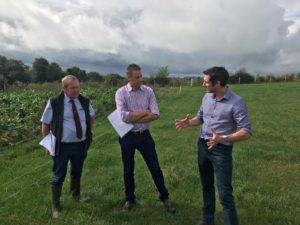
2019: John Martin
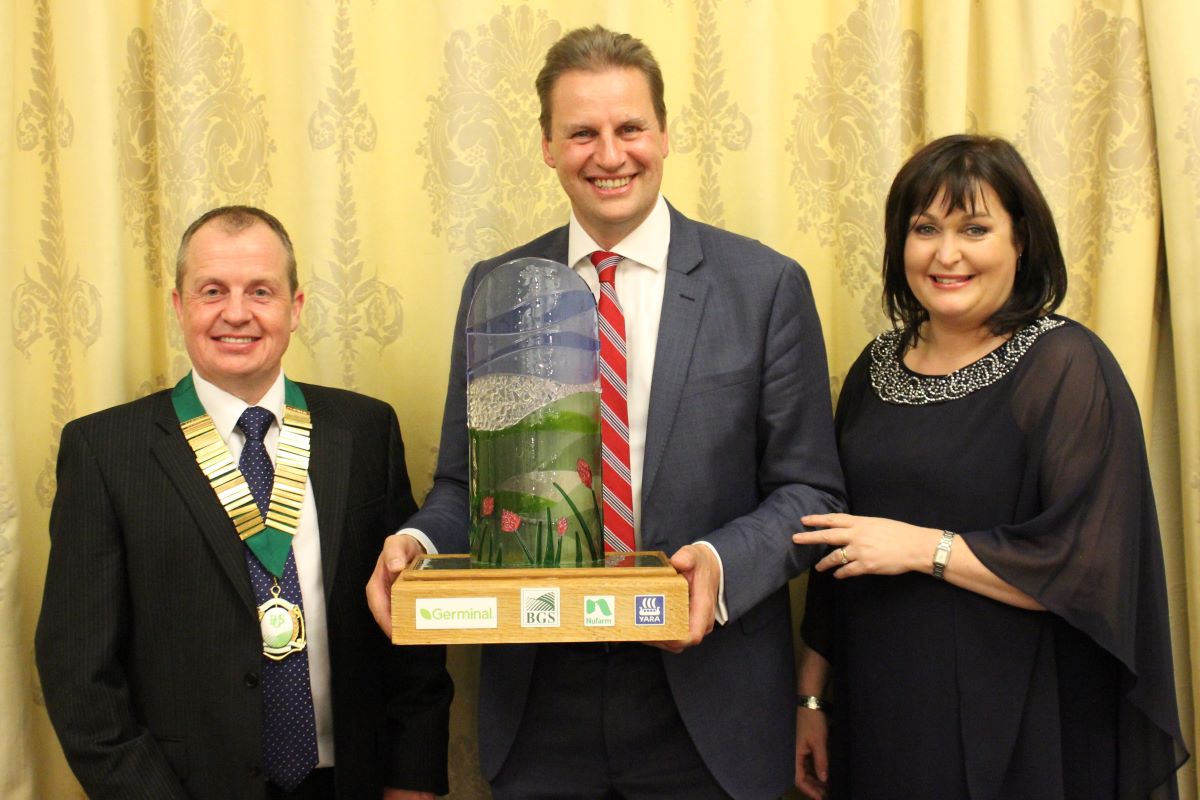
John, a member of Ulster Grassland Society, farms near Strangford Lough and runs a 680-ewe flock together with a small number of beef cattle and a diversification enterprise growing short rotation coppiced willow to supply wood chip for biomass boilers. Head judge Steve Brandon commented: “Following the decrease in the size of the beef enterprise a number of years ago, John has developed a very sound commercial sheep flock with the emphasis on a smaller more prolific ewe to suit an intensively rotationally grazed sheep flock.”
John has worked with the Agrifood and Biosciences Institute (AFBI) in Northern Ireland as a co-researcher to develop easier care sheep systems while also improving profitability. The flock is split, with 170 ewes treated with melatonin to lamb in mid-January and the remaining 340 ewes and 170 ewe lambs lambing from mid-March. All ewes are of composite genetics creating a small, prolific ewe. Replacements are homebred, but terminal sires are also used for finished lamb production, with the majority of lambs being sold off grass by the end of November. With an overall stocking rate of 13 ewes/ha the farm regularly produces 500 kg of lamb/ha. High quality silage is fed to the ewes during pregnancy with the addition of concentrates in the last two-to-three weeks pre-lambing. Rotational grazing has been made possible by the use of semi-permanent and flexible electric fencing. Recently, 2.6 ha of multi-species herbal leys have been sown for their drought resistant and anthelmintic properties. The planting and regeneration of hedgerows, together with the establishment of a mixed woodland, encourages wild birds on the farm.
Head judge Steve Brandon said: “We were all impressed by how John has developed the farm through innovation and working with research, utilising the farm’s ability to produce high yields of quality grass, which is then converted into a high level of profitable finished lamb production. This has all been done alongside consideration for the environment, taking part in various environmental schemes to improve habitats for birds and other wildlife.”
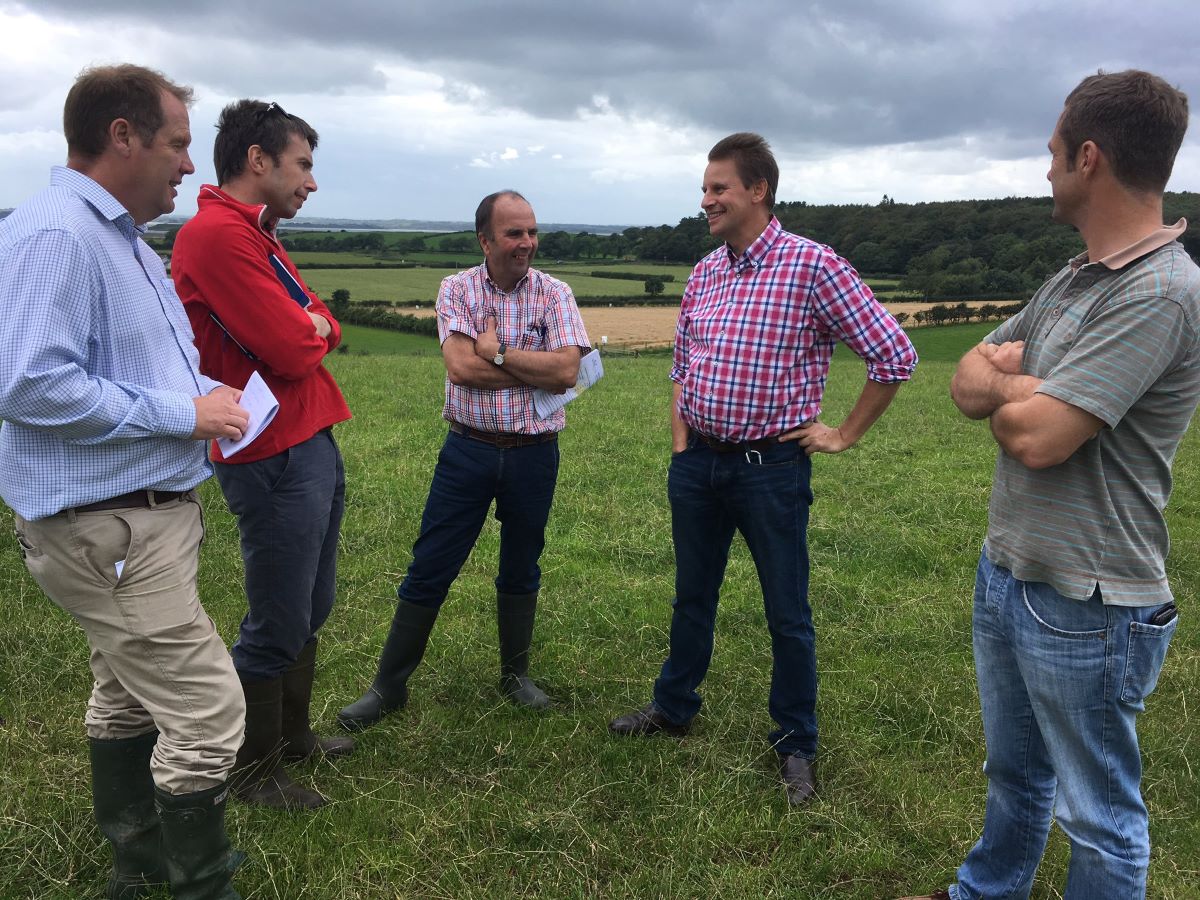
2018: Richard Rogers
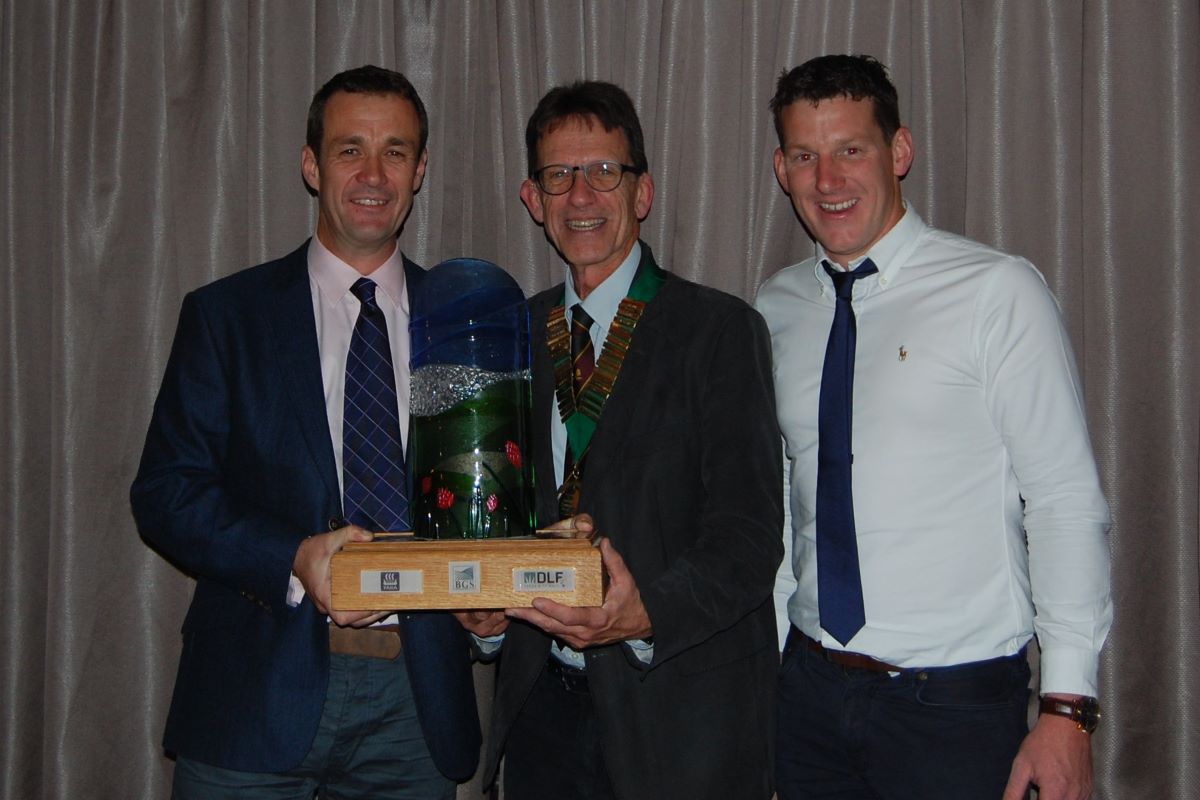
The team at Tre Ifan Farm in Anglesey is led by Richard Rogers and fellow farm director Gethin Roberts. At the time of their win the farm had only been running a dairy enterprise for four years, having previously been a beef and sheep unit. The spring block-calving herd is highly stocked with 3.9 cows/ha and the 350 New Zealand cross-breeds produce an average of 5349 litres/cow. The farm is focused on maximising production efficiency from grass with an impressive 4099 litres from forage, 3200 litres of this from grazing. Around 1250 kg/cow of concentrate is fed, balancing cow demand and grass growth. Fertility in the herd is excellent, with a 93% six-week in-calf rate and a 4.2% empty rate.
The grazing platform is measured and recorded weekly, with the herd grazing from around February 10 to November 10. Wetter areas are avoided in early and late rotations to avoid soil damage. About 10-15% of the grassland is reseeded each year, using quality varieties, including some clover, which is present in larger amounts on the silage ground.
Soil nutrition is influenced by regular soil analysis, with slurry applied by trailing shoe in modest post-grazing dressings to support nutrient offtake. Nitrogen is applied at three-week intervals from early March, depending on the temperature.
The aim is to produce 1.8 t of silage per cow, with 0.7 t of this being bought-in hay or more fibrous silage for dry cows, whilst 1.1 t of higher quality is allocated to support milk from grass. This is primarily buffer fed in spring and autumn when growth is lower. A quality first cut of silage is targeted, with clover helping to support a good crude protein level.
The environment is taken into consideration, with the river fenced to prevent cow access and create a wildlife corridor, whilst natural and historic features were protected during the farm’s conversion to dairying.
Head judge Steve Brandon, a Staffordshire dairy farmer said “Growing 14.3 tonnes of grass dry matter, achieving a 93% six-week in-calf rate and exceptional milk yields from forage, have all contributed to making this a really top class unit.”
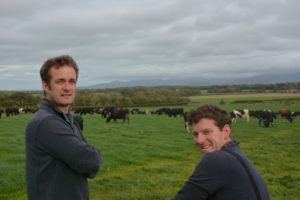
2017: Rhys James
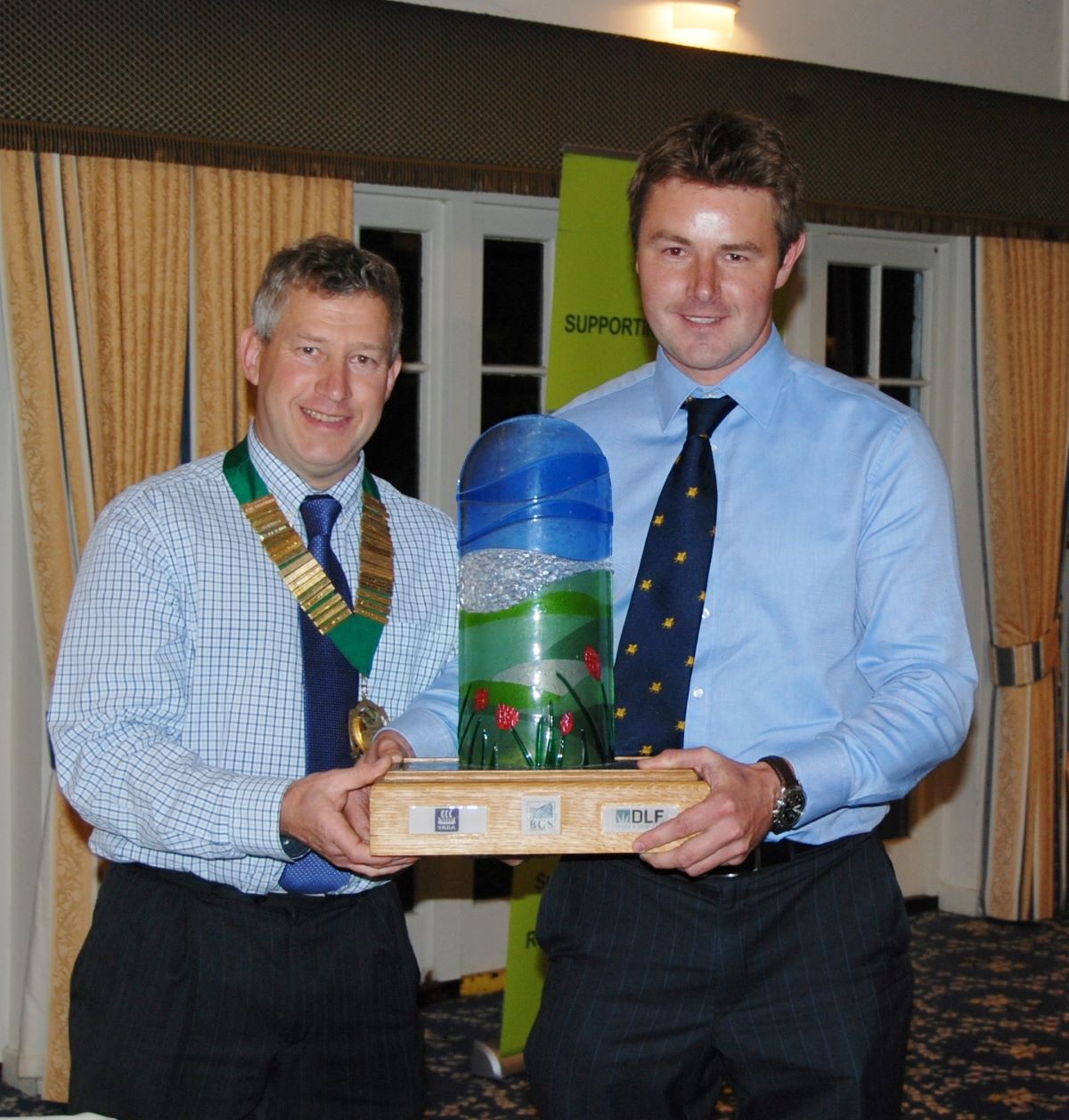
Duckspool Farm, at Wiston near Haverfordwest, is run by Rhys James as part of the James Brothers partnership, the farm having been purchased by the family in 2009. The 180 ha (444 acres) is densely stocked at around 3.26 cows/ha, but closer to 4.1 cows/ha on the grazing platform. Mr James currently milks 419 cross-bred cows, calved as a block from February to mid-April and managed under a grazing-focused system. However, the careful grassland management means that 3950 litres of the average 5500 litre/cow milk yield is obtained from forage, the bulk of this being from grazed grass. Concentrate use is around 1000-1100 kg/cow, or a rate of 0.21 kg/litre. Cubicle housing has been built to allow cows to be housed when ground conditions are not appropriate for grazing.
All of the grassland has been reseeded in the last six to seven years and attention is now focused on renewing the poorer performing fields. Similarly, the farm is soil sampled every two years; P and K fertiliser were used in larger amounts initially to lift indices but now are used modestly to maintain them, with modest regular dressings of a compound fertiliser with added sulphur.
Fertiliser is spread using GPS guidance, with border and headland control, whilst slurry storage with six months’ capacity has been constructed, meaning that spreading can be carried out when ground conditions are right and with regard to utilising the nutrients to their best effect. Development has included building farm tracks, installing 7,000 meters of water pipe, electric fencing and building a new Milfos 28/56 herringbone milking parlour.
Efficiency of production and well budgeted and planned utilisation of grassland that allowed for controlled supplementation to manage shortages or slowed growth in a highly stocked system are key factors in the success of the farm.
2016: Eurig Jenkins
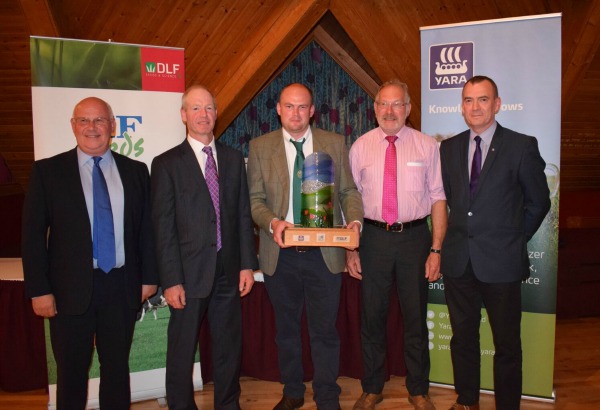
Eurig Jenkins of Pentrefelin Farm, near Lampeter in Wales, won the competition in 2016. The farm extends to 290 ha (716 acres), over mostly clay soils at altitudes from 76 to 310m (250-1000 ft) with a 90 ha grazing platform. It is home to 400 milking NZ Friesians, where, among other impressive figures, Eurig and his family achieve <20% replacement rate and >120 calves born early-February to mid-April.
The whole family have an interest and involvement in the farm. Bearing in mind that family businesses can often be tricky to manage, this aspect represents a skill in itself, one which Eurig agrees is important to the success of the business stating “I greatly believe that there is a younger generation of farmers in the UK ready to feed the population in the years ahead. They don’t get the credit that they deserve because of working on family farms which can sometimes be very frustrating especially where a lack of enthusiasm leads to being stuck in a rut with no new ideas implemented”.
At Pentrefelin new ideas have been implemented, including the various forms of technology now playing an important role in managing a system that seeks to use resources efficiently, without waste and to their optimal potential: Grass is measured and budgeted, nutrients applied precisely using GPS, water is captured and recycled and energy saving equipment is used.
Head Judge, Glasnant Morgan said “Mr Jenkins’ farm in Mid-Wales demonstrates not only excellence in grazing-focused dairying, but also other aspects relevant to all livestock sectors, including adoption of new technology for nutrient management and energy saving. His farm is also a good example of how to sustain good working relationships on a family holding.”
2015: Colin Boggs
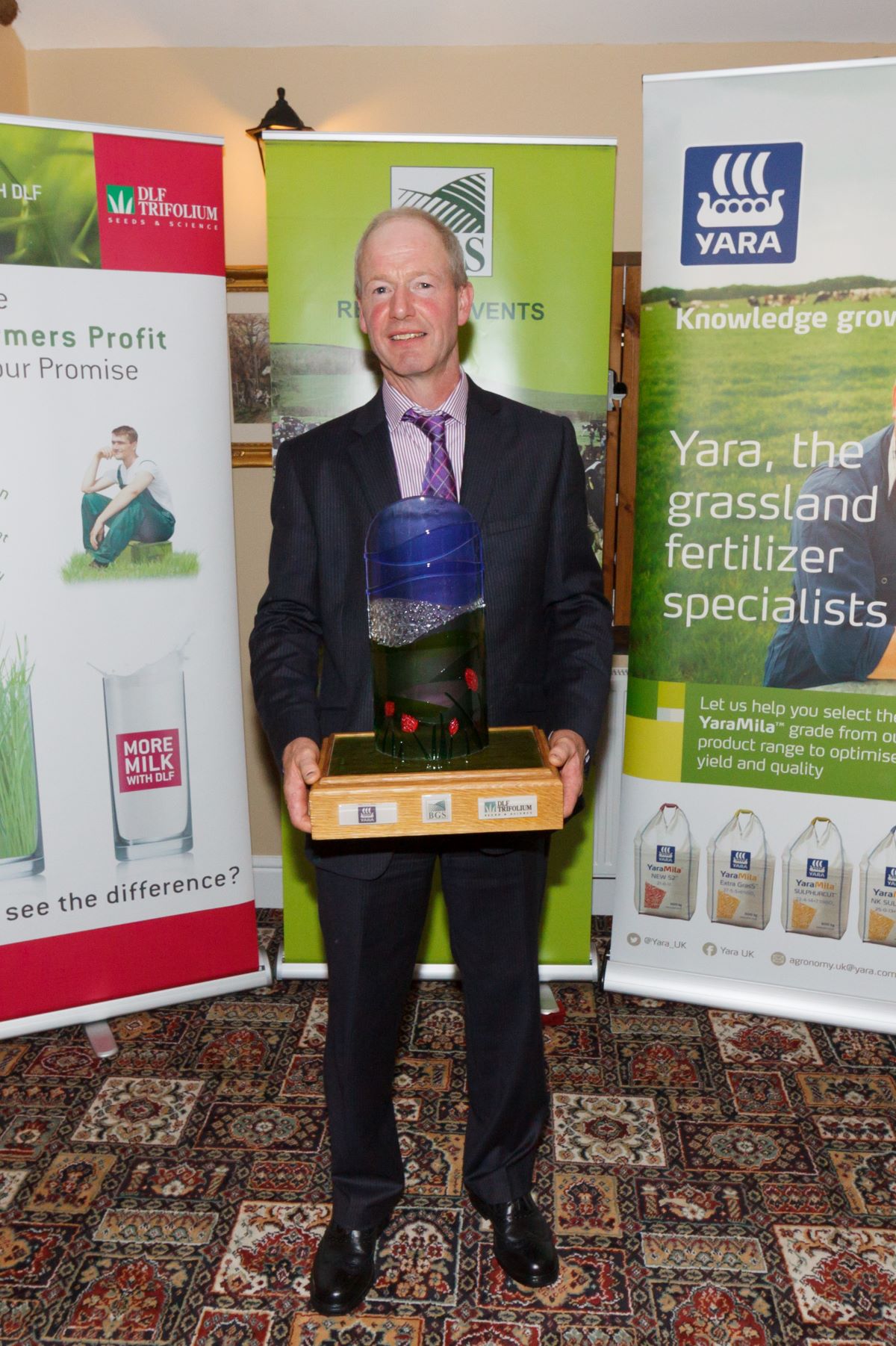
Colin Boggs at Clover Hill Farm, County Down in Northern Ireland runs a 120-cow herd producing a rolling average of 6,530 litres per cow at 4.35 % butterfat and 3.50 % protein. Just 666 kg concentrates are fed per cow, giving an impressive 5,161 litres yield from forage.
Attention to grazing management has a lot to do with Colin’s success; he aims to turn out as early as possible and keep grass at the leafy stage through using rotational paddocks and pre-mowing from the second grazing until the end of the growth season. Grass is measured to ensure cows are going into the correct covers, typically around 3050 kg DM/ha, coming out at 1700 kg DM/ha. Towards the end of the season he implements zero-grazing to improve utilisation of the last grass.
The herd is mainly Friesian, predominantly New Zealand with some British. The AI starts in mid-April and an Angus bull sweeps-up after eight to nine weeks. All heifers are served with an Angus bull to calve from 22 months. Calving is from the end of January until the end of April. Colin aims to make the best silage possible.
All pastures are sown with varieties from the Northern Ireland recommended list, and Colin believes that pre-mowing helps them last longer. No alternative forages are grown. The average feed rate for the year ending March 2015 was 0.1 kg/litre.
Colin has established four reed beds to filter the dirty water coming out of the farm yard. Hedge planting has been undertaken as part of the Countryside Management Scheme.
2014: Dafydd Jones
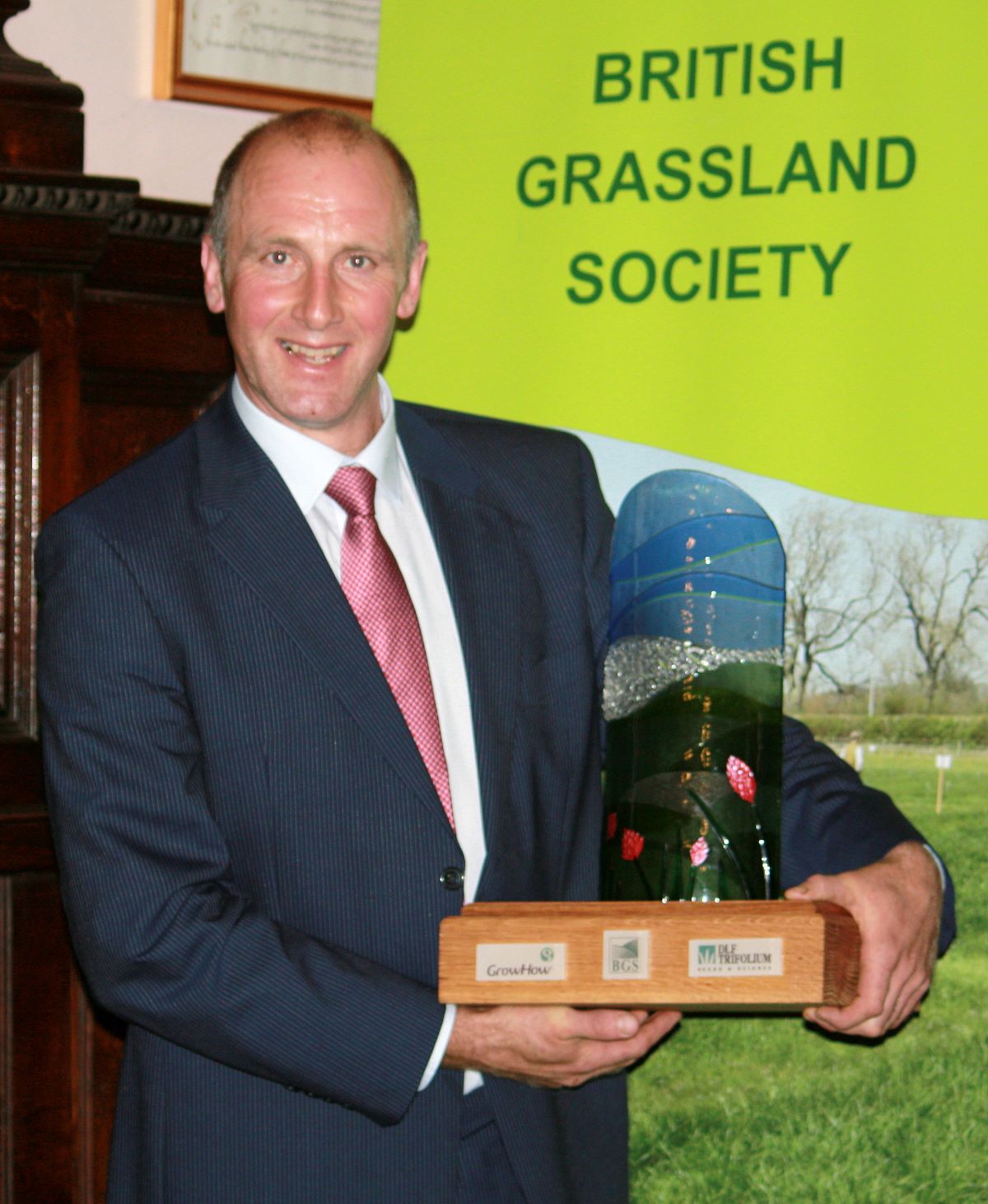
Beef and sheep farmer Dafydd Jones runs a 190 ha (470 acre) upland unit at Maesllwyni Farm, Penegoes near Machynlleth, Powys. The organic farm is on land that climbs to 300m (984ft), receiving an average annual 1500 mm (60 inches) of rainfall. Seventy Limousin x cows mated to a Hereford bull produce calves that finish at between 20–28 months of age achieving live-weights up to 700 kg. The 750 Texel x Improved Welsh ewes are mated with a Charollais terminal sire to lamb in March. The lambs are all finished and marketed by September.
Mr. Jones’ philosophy is to minimise the cost of inputs while producing a quality product for his market. He makes good use of red and white clover and well thought-out grazed and conserved grass management, to make the most of home-grown forages rather than rely on expensive bought-in feeds. Dafydd implements simple and efficient techniques, by using cows and sheep as a tool for grassland management and weed control.
Being an organic farm, clover is a crucial management tool for Dafydd: “Clover has got a lot to offer in terms of animal production and reducing costs by eliminating the need to buy in nitrogen and protein,” he explained. “The aim of the farm is to be self-sufficient in protein, by utilising white and red clover to their maximum potential. We have been making great strides in order to achieve this over the past 12 months,” he added.
Head Judge Glasnant Morgan said “Dafydd is full of optimism and a strategist – supplying what the market wants and getting a premium price for his endeavours. He also knows his cost of production and practices self-sufficiency as far as is practical. Grassland and protein boosting clovers are used to best advantage.”
2013: Mathew Venables
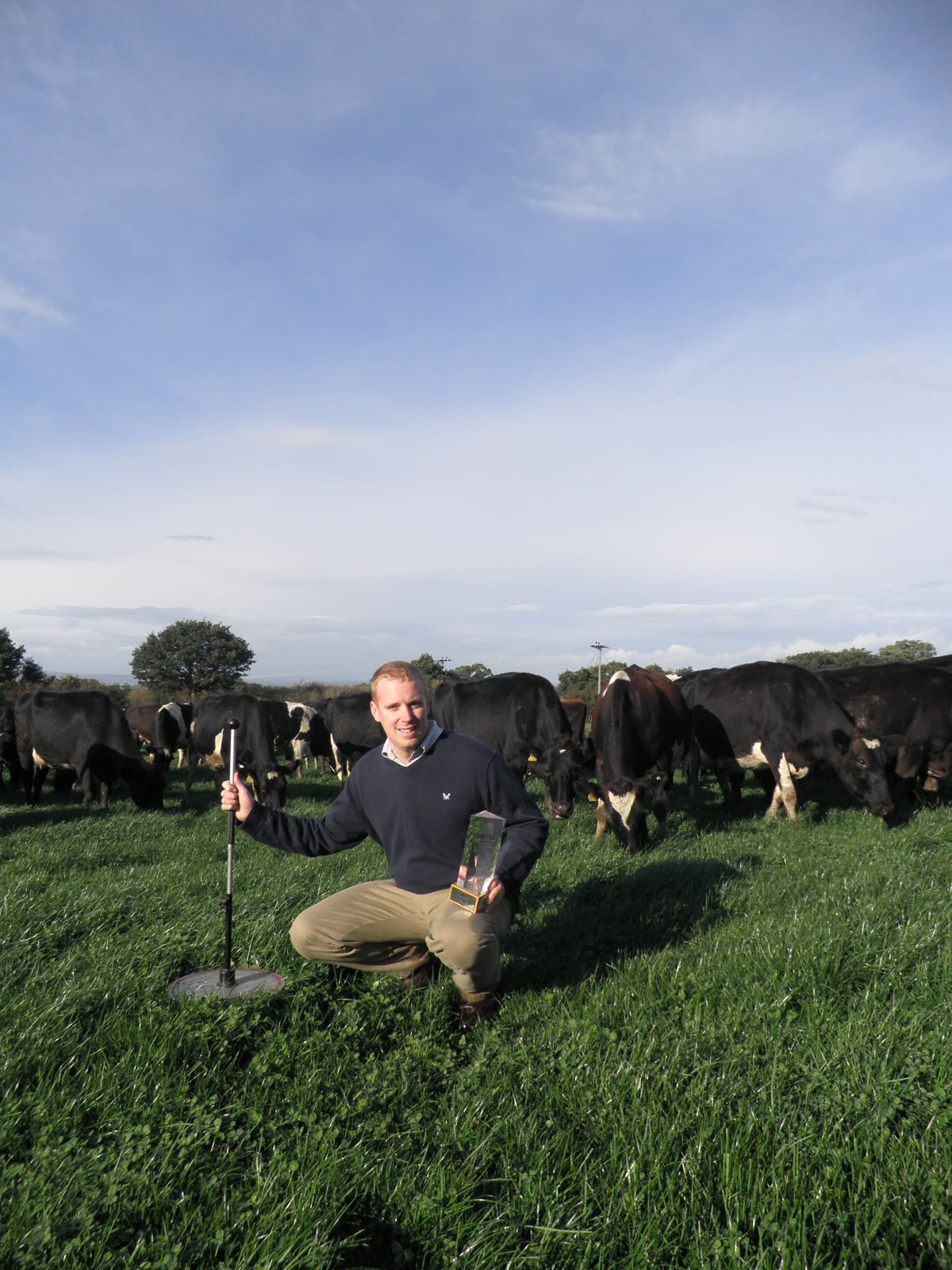
Cheshire dairy farmer Mathew Venables and his wife Nicky have contract-farmed Pigeon House Farm with their landlord since June 2008. The 132 ha (326 acre) grassland farm carries 480 spring-calving New Zealand crossbred cows. The herd averages a yield of 5,079 litres, with 3,412 litres coming from forage. The cows are stocked at 3.69 cows per hectare.
The farm is run as a separate closed unit solely for grazing the milking dairy herd. Support land, in blocks some distance away from the farm, is used for youngstock grazing, silage production and growing fodder beet for outwintering in-calf heifers. All forage from this block, plus the near-calving heifers, are ‘bought’ by the Pigeon House Farm business.
Visits to New Zealand have helped Matt formulate his grassland policy. Knowing how much grass can be grown on the whole farm means he can stock it with enough cows to graze it efficiently. Central to this is measuring grass each week. In addition to showing which fields to graze and whether there is a surplus or shortage looming, it also records production across the year to judge which paddocks need reseeding.
The policy with the cows is to provide them with 18 kg of dry matter (DM) a day, of which 2.0 kg/DM/cow is fed as a blend in the parlour at a flat rate through the grazing season. If the remaining 16 kg of DM cannot come from grazed grass, due to drought or wet conditions, extra feed is provided to maintain the paddock rotation, and the cows dry matter intake (DMI).
“Grazing a herd of 480 spring calving cows as one group is not easy, especially when you are trying to graze a paddock efficiently to leave a residual of 1500 kg/DM/ha,” said Mr Venables. “If a paddock has not been grazed off cleanly, we turn the herd back into it after milking, and leave the cows there for a couple of hours before moving them onto a fresh block of grass.”
“Mathew’s willingness to change and look at things from different angles, is what really made him stand out as a worthy winner,” said head judge Richard Ratcliffe. “Flexibility has given him the experience to manage the herd when things are going against him, resulting in a very robust system.”
Grassland Farmer of the Year Sponsors

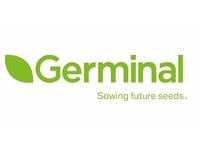
Germinal
X: @wearegerminal @GerminalUKAgri
Visit the Germinal website
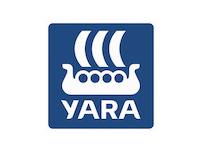
YARA
Find more information about grassland nutrition on the Yara website
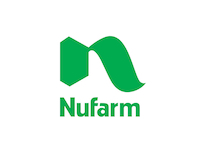
Nufarm
X: @NufarmUK
Visit the Nufarm website

